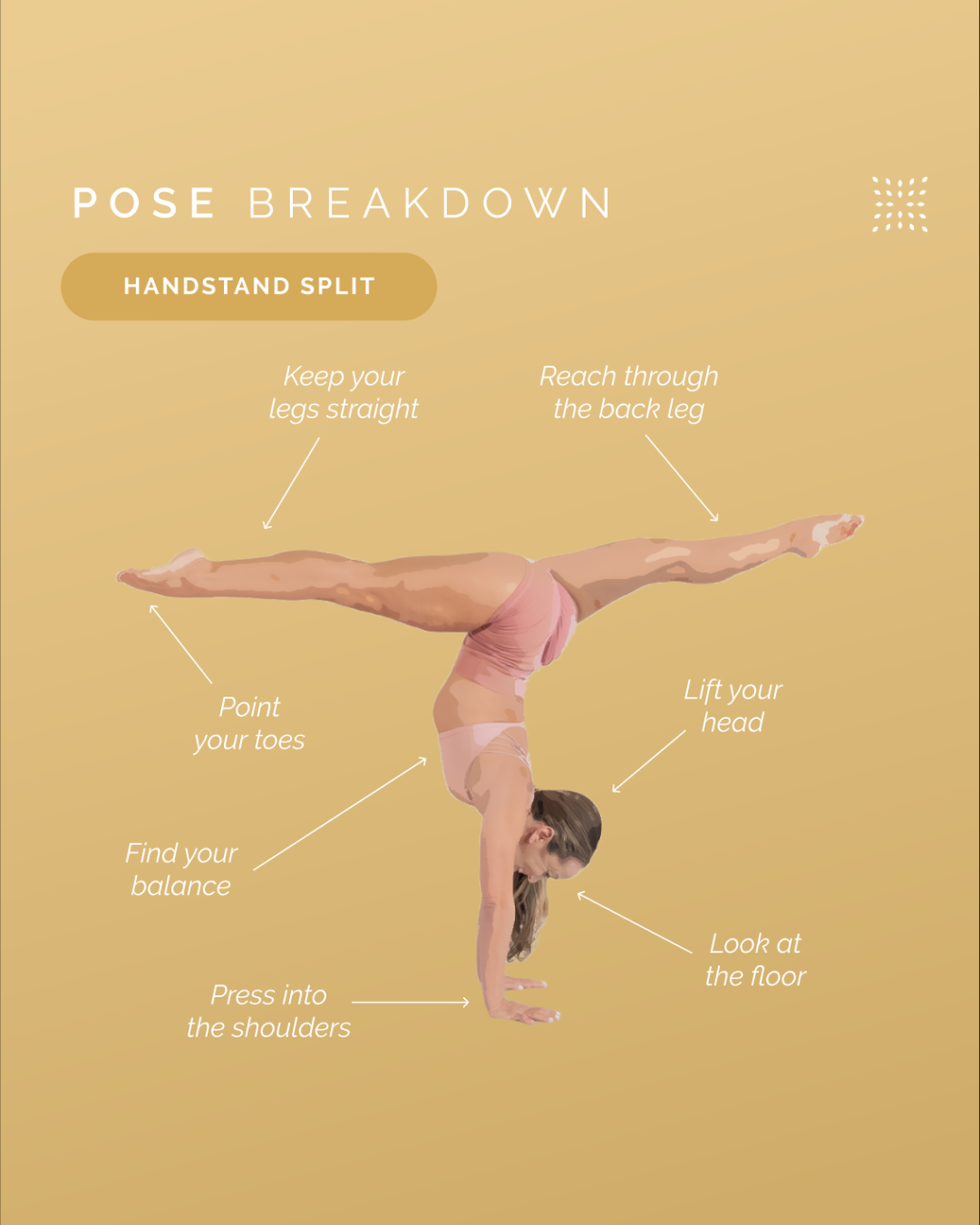
Yoga handstand can seem like an intimidating pose but it does not have to be. There are some simple preparations that can be taken to be sure that handstand is safe and fun. Through proper alignment and a few tips, handstand will become accessible in no time. The benefits of yoga handstand make it worth taking time in the preparation poses so that the handstand can become part of a regular yoga practice without injury.
Preparatory Poses For Yoga Handstand
Before moving safely into yoga handstand, it is important to build the strength that is needed to keep the arms straight and the core strong (to keep the spine long). The handstand requires the shoulders to be strong and open at the same time. Focus on poses that strengthen the arms and shoulders, poses that open the shoulders and some poses that strengthen the core before moving into handstand.
Begin by taking a few rounds of cat’s breath and downward facing dog to warm up the shoulders, followed by some sun salutations. To access the core, take a few cycles of navasana (boat pose), focusing on keeping the belly button moving in and up to support length throughout the spine.
Moving into Yoga Handstand
When coming into handstand, it is important to use the support of a wall for stability, at least at first. Come to a wall and move into downward facing dog pose, with the fingertips about six inches away from the wall. It is very important here to keep the arms straight and the hands flat. Step one foot about halfway in and shift the shoulders forward until they are over the wrists. Look to the spot where the wall and floor come together and keep the gaze focused there. Kick with the back leg and work to move the hips over the shoulders. For the first few tries this will be the practice. Just kick, keeping the arms straight. Eventually both legs will come to the wall and you will be in yoga handstand. Keep the belly lifted, think of taking the tailbone to the ceiling and the front bottom ribs back into the body so the lower back does not become over-arched.
Alignment and Tips For Yoga Handstand
When moving into yoga handstand, there are a few tips that make it a little easier. The first is to keep the arms straight, hands flat on the floor, no matter what. The second is looking to where the wall and floor come together. Once in the pose, try flexing the feet and moving the heels up the wall to lengthen the lower back. To access the core, squeeze the inner thighs together and move the belly button in and up.
Benefits of Yoga Handstand
Yoga handstand not only builds strength in the wrists, arms, shoulders and core muscles, it also brings fresh blood to the head, making the body feel more energized and alive. The handstand also improves concentration and by opening the muscles the shoulders can help to relieve and reduce stress.
When Not to Practice Yoga Handstand
Yoga handstand (and all other inversions) are best avoided for people with high blood pressure, a history of stroke, glaucoma or any woman on the first few days of her menstrual cycle. People with shoulder, back or wrist injuries should also avoid practicing this pose unless under the guidance of an experienced and knowledgeable teacher.
When done on a regular basis, yoga handstand can become a fun part of an ongoing yoga practice. Taking time in the preparations to ensure safety and build strength are an essential part of learning to jump into handstand with ease. Proper alignment is a key part of this pose; without it there is little to support the pose and injury becomes possible. Using these tips will make yoga handstand not only fun but an empowering part of a complete yoga practice.




